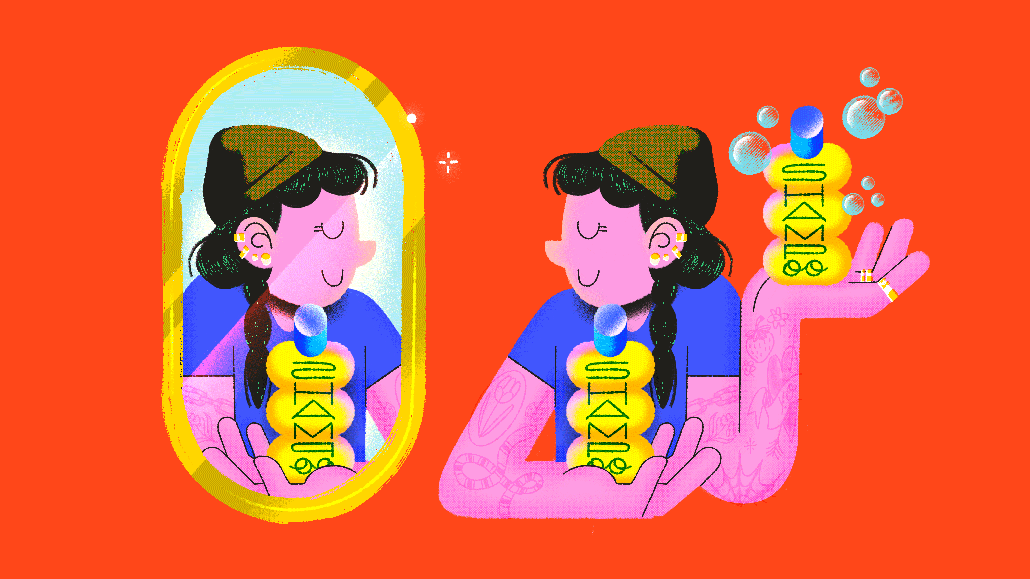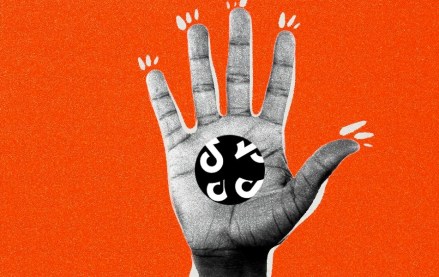Insights from CTV leaders at Dentsu, Horizon Media and more
Marketing Briefing: Why marketers are seeking deeper partnerships with artists to remix songs, offer experiences

This Marketing Briefing covers the latest in marketing for Digiday+ members and is distributed over email every Tuesday at 10 a.m. ET. More from the series →
Brands today want watercooler moments that breakthrough to be part of culture rather than simply advertising around it.
Of course, it’s only become harder to score those moments in today’s increasingly fragmented and politically divisive media and marketing landscape. That might be why some brands like Wendy’s and Pepsi, among others, are eyeing deeper partnerships with musicians like Bad Bunny and T-Pain.
Marketers and agency execs say that the success Taco Bell saw with its Doja Cat partnership in the spring of 2022 has likely spurred more brands to want their own version of that effort. In recent weeks, Pepsi has unveiled a partnership with Bad Bunny while Wendy’s has partnered with T-Pain to garner more cultural cache for their brands. By working with musicians and celebrities, brands can potentially generate more attention and less interruptions, according to agency execs, who say that brands are looking for anything that can help them connect with consumers, especially younger cohorts, more deeply and authentically.
“Brands want to be part of the dinner conversation – that’s the Holy Grail for a brand,” said Matt Babazadeh, head of strategy at Zambezi, adding that when working with celebrities today brands want to give consumers something beyond said celeb appearing in an ad. “Being connected – not just piggybacking on culture – is what brands want. Celebs can help them do that.”
For example, the Bad Bunny and T-Pain’s collaborations with brands offer a tangible experience; Bad Bunny and Pepsi are offering free Apple Music to consumers while T-Pain and Wendy’s have created an catchy ear-worm that brings back memories of dancing to T-Pain’s “Buy U A Drank” but remixed to tout a new Frosty.
“Music will bring back memories that were maybe laying dormant,” said Katy Tenerovich, director of social strategy at Carmichael Lynch. “That’s one piece of how if you do it correctly [working with musicians]. If it can become an earworm with people humming and singing [it] then that helps them [brands] infiltrate culture.”
That cultural infiltration doesn’t happen by simply licensing a song from an artist or working with them for an appearance in marketing campaign. By having Doja Cat create a jingle for Taco Bell or having Travis Scott create a meal for McDonald’s, for example, brands are finding ways to deepen their partnerships with artists to then have the breakthrough moments they desire, according to agency execs.
“We’ve gone beyond the minimal endorsement by celebrity or musical artists,” said Paul Greco, executive director of music and audio production at Wunderman Thompson. “Now they are getting more and more involved in the entire creative [process]. It’s about a bigger idea, bigger participation.”
And marketers are prioritizing working with musicians and musical artists as sound has become more important in recent years, likely due to TikTok’s rise, noted Cass Cervi, strategist at creative shop No Fixed Address, who added, “Sound and remix of sound has been crucial to how people engage with social landscape.”
That said, working with artists on deeper partnerships for cultural cache isn’t without risk. “There’s safe bets and bets,” said Daniel McCarthy, CEO of music licensing company Musicbed, adding that Adidas’ recent difficulties with Kanye are an example of partnerships gone awry. “As much as you want to say, the brand’s personal opinions and beliefs are not reflected… when you’re pairing your brand to a living breathing human it can be dangerous. Most times it pays off. Sometimes it doesn’t.”
Marketers and agency execs say that the risk is likely worth it though as “music is a wonderful conduit to that connection,” said Jared Scott, chief marketing and operations officer at brand marketing shop The Revival House. “It can help bond consumers to a brand, and break through the clutter.”
“When a brand knows its audience, partnering with the right artist creates content worth consuming and sharing, hence two-minute jingles working,” said Teddy Stoecklein, executive creative director at VIA. “It’s better for the brands, the artist, and ultimately the consumer. More Doja Cat, please. Ehem, tacos.”
3 Questions with Michelle Cordeiro Grant, founder and CEO of Gorgie drink brand
How do you prioritize media channels to meet your brand goals?
TikTok is a big one for us. We love TikTok because it shows us why people care about us and they literally say what it is [that they care about.] Instagram is more like the billboard arena. We move people from TikTok over to Instagram, which is really interesting. We’re still old school in that email and text [are a big priority because] that’s where you know your customer. That’s where you get to have a long term relationship.
Why move people from TikTok to Instagram?
TikTok is still a really fun playground. We feel like we can have more [direct message] dialogue on Instagram. It just happened that way. We also launched a YouTube Shorts channel because we do believe YouTube Shorts are equally as important as TikTok. We are in beta. There’s no hardcore strategy other than: This is what feels natural today.
Why TikTok as a go-to market platform as opposed to others?
It’s like where Instagram was in ‘16. Are the tools as easy as they are for Instagram now? No. But will they get there? Yes. Are we more bullish on TikTok than Instagram, probably. — Kimeko McCoy
By the numbers
As many Gen Zers spend the Spring in graduation cap and gowns, conversations about career paths are likely ramping up. Taking a look at these life-change discussion at a macro level, LinkedIn recently released research on the top jobs, industries and cities to launch a professional journey. — Kimeko McCoy
- Hiring for consulting roles like client advisor and business consultant was up by 34% between 2021 and 2022. Marketing (22.9%) and research (22.7%) roles also saw significant hiring growth for those without a Bachelor of Arts degree.
- Remote and hybrid roles accounted for 12.3% of entry-level job postings on LinkedIn in the first two months of 2023, compared to 9.6% in the same period last year.
- Hiring for product management roles jumped by nearly 26% between 2021 and 2022, with employers like Capital One, Publicis Sapient and Medline Industries among the top hiring companies.
Quote of the week
“There’s no magic time limit to what makes good content.”
— Bose’s CMO Jim Mollica when asked about long-form vs short-form content as the short-form content boom continues
What we’ve covered
- Amid a dearth of ad tech M&A, LiveRamp fielded inbound inquiries over a potential sale
- Bic puts its ‘largest investment’ in over 5 years to pitching its new razor with influencers
- How influencer agency Billion Dollar Boy is using AI to change discovery in that space
Update: A previous version of this story incorrectly stated Matt Babazadeh’s title. It has been updated.
More in Marketing

Retail media’s mid-2025 reality: Why advertisers are going all in on full-funnel
Retail media’s meteoric rise may finally be leveling off — and that’s forcing advertisers to take a harder look at what they’re getting for their money.

TikTok might be working on a standalone U.S. app, but marketers aren’t sold on the idea – yet
TikTok is developing a lifeboat for its American business, but media buyers are wary of advertising implications.

Bold Calls for the back half of 2025
Now’s a good moment as any to take stock —and make a few bold calls about what’s coming next.





